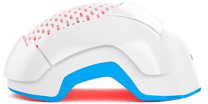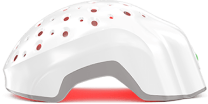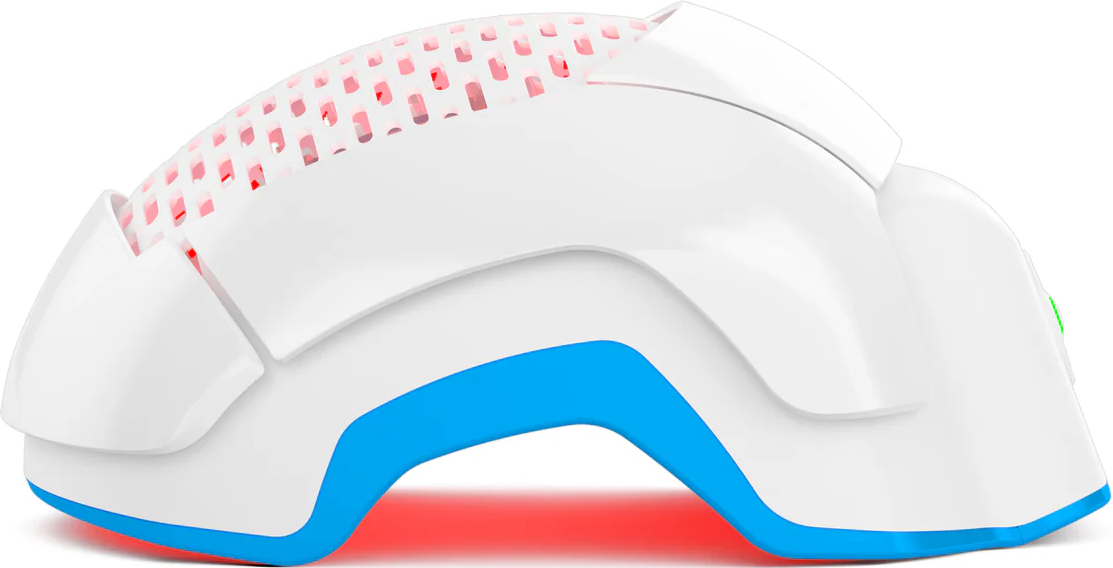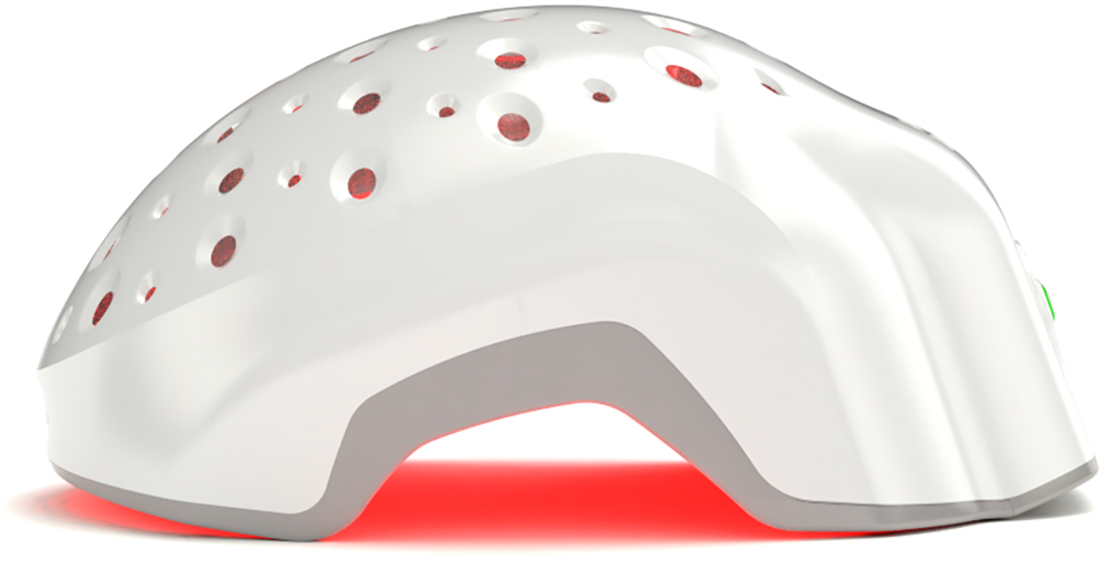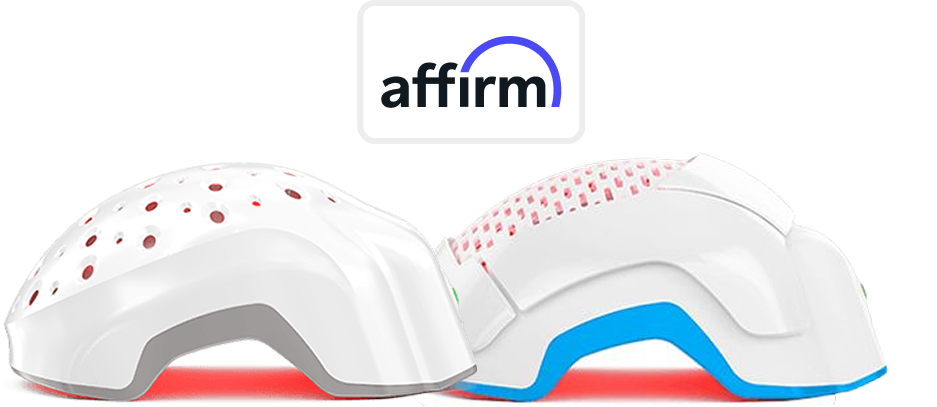You can inject it, swallow it, rub it in, or inhale it. Steroids come in more delivery systems than your favorite pizza joint. But what they often don’t come with is a proper warning label on what they might do to your hairline.
Now, does steroids cause hair loss? Yes. Sometimes. Not always. And not for everyone. But if your strands have started staging a quiet exit while you're on a steroid regimen (whether prescribed or performance-enhancing), there’s a very real chance the two are connected. Not some internet rumor. Not just gym locker talk. Actual science.
But don’t let the drama around it fool you—it’s not the steroid itself pulling strands out of your scalp. It’s the hormonal chaos some steroids trigger beneath the surface. And as always with hair, the scalp remembers.
So in this blog, you’ll learn what types of steroids can lead to hair loss, how and why it happens, what role genetics plays, and what you can do about it. Because understanding this stuff might just save your hair—or at least explain what your mirror’s been trying to tell you.
Which Types of Steroids Cause Hair Loss?
Let’s clear something up fast: the word “steroids” is thrown around more loosely than gym towels. Not all steroids are the same, and they sure don’t all mess with your hair the same way.
On one side, you’ve got anabolic steroids—the muscle-building, testosterone-boosting kind often used (and abused) in fitness circles. Then there are corticosteroids, the medical ones, often prescribed to reduce inflammation. Different classes. Different effects. One is a troublemaker for your follicles; the other might help or harm, depending on the context.
Anabolic Androgenic Steroids (AAS)
These are the synthetic cousins of testosterone—the same hormone that fuels muscle gain and fuels male pattern baldness. Anabolic steroids crank up testosterone levels, which sounds great until it starts converting into DHT (dihydrotestosterone). That’s the part your hair absolutely hate.
So if you’re genetically wired for androgenetic alopecia, anabolic steroids are like handing a loaded gun to a hair loss gene. Nandrolone, stanozolol, boldenone—they might bulk up your biceps, but they’ll also quietly sabotage your scalp. Not all hair loss is the same, but this one’s got a hormonal trail of receipts.
Corticosteroids
Corticosteroids, on the other hand, are your anti-inflammatory best frenemies. Used in conditions like eczema, lupus, or asthma, they work by dialing down the immune system. But prolonged use—especially oral or injected forms—can trigger temporary shedding (telogen effluvium).
Here’s where it gets a little ironic. Corticosteroids are also used to treat autoimmune hair loss conditions like alopecia areata. So yes, some people lose hair because of corticosteroids. Others use them to regrow it. Context and dosage matter, big time.
How Steroids Cause Hair Loss?
Hair loss from steroid use is rarely instant. It’s sneaky. First comes the hormonal disruption. Then comes the hair fall-out.
The Role of DHT (Dihydrotestosterone)
Let’s talk DHT. Anabolic steroids jack up your body’s testosterone. Some of that testosterone gets converted into DHT, a supercharged hormone with a vendetta against your scalp—if you’re genetically susceptible.
DHT binds to receptors in hair follicles, shrinking them down like they’re being vacuum-sealed. The hair growth cycle gets shorter. The follicles get weaker. Eventually, they stop growing visible strands altogether. That’s not just thinning—it’s follicle miniaturization. The polite clinical term for “your hairline’s packing up.”
And once DHT damage reaches a certain point, it’s not easily reversed. You’re not just shedding—you’re slowly going bald.
The Impact of Corticosteroids on Hair Follicles
Corticosteroids don’t target follicles directly like anabolic steroids. Instead, they disrupt the body’s internal rhythms—particularly the hypothalamic-pituitary-adrenal (HPA) axis. When this axis gets suppressed (which can happen with long-term steroid use), the stress regulation system goes haywire.
That hormonal imbalance can push hair prematurely into the telogen (resting) phase, triggering sudden, diffuse shedding. It’s often temporary, but repeat cycles can stress follicles enough to delay full regrowth—or leave some density gaps you didn’t sign up for.
Other Risk Factors That Worsen Steroid-Related Hair Loss
There’s no such thing as hair loss happening in a vacuum. If you’re already prone to androgenetic alopecia, anabolic steroids just throw gasoline on the fire.
Other culprits are poor scalp health. Overtraining. Under-eating. High stress (ironically, common among steroid users chasing performance goals). Even nutritional deficiencies—particularly in zinc and iron—can make hair loss worse while you’re on steroids.
Stacking multiple steroids ("cycling"), skipping post-cycle therapy (PCT), or combining steroids with harsh gym habits just turns a bad situation into a follicular massacre.
Is Hair Loss from Steroids Reversible?
Sometimes. But not always. It depends on the type of steroid and how long it’s been doing the dirty work.
Hair loss from corticosteroids? That’s usually telogen effluvium—shedding that typically reverses once the steroid is reduced or discontinued. Hair regrows, albeit slowly, over several months. But if you keep hammering the system with chronic steroid use, the shedding might not fully reverse.
Anabolic steroid-induced hair loss is even trickier. If DHT has miniaturized the follicles beyond recovery, the hair loss may be permanent. Especially if you’ve had a family history of pattern baldness waving its warning flag for years.
How to Prevent or Minimize Hair Loss from Steroid Use?
First off—don’t touch anabolic steroids if you care deeply about keeping your hair. No judgment, just facts.
But if you’re using steroids under medical supervision or weighing the risks for performance reasons, there are ways to reduce the damage:
Use DHT-blockers (under medical advice only, of course). For example, Finasteride can reduce DHT levels—but comes with its own side effects.
Stick to shorter cycles. The longer you’re on steroids, the more your follicles suffer.
Use post-cycle therapy (PCT). It’s not optional if you’re messing with hormones.
Treat your scalp like a VIP. A clean, well-moisturized, non-inflamed scalp gives follicles a fighting chance.
Strengthen strands from the inside out. Protein, iron, zinc, omega-3s—don’t skimp.
These won’t stop all hair loss from steroids. But they may reduce the volume of it.
When to Seek Help
If your hair’s falling out faster than your gains are piling up, don’t wait. Get a scalp analysis. A trichologist or dermatologist can help differentiate between temporary shedding and permanent loss.
Hair loss is often the body’s alarm system. The sooner you catch it, the better your odds of holding on to what’s left—and maybe even bringing a bit back.
Conclusion
Steroids may sculpt muscle, shrink inflammation, or boost performance — but they also come with receipts. If you’ve ever wondered whether steroids cause hair loss, the science is there.
That said, hair loss from steroid use isn’t always irreversible, and it’s not guaranteed for everyone. Your genetics, your steroid type, your dosage, and even your diet all weigh in. What matters most is knowing what you’re signing up for — and making moves (early) to offset the fallout.
So, if your hair’s been thinning while your lifts go up, or your inhaler leaves you with more strands on the pillow than usual, you don’t have to guess anymore. You’ve got the facts. Use them.


